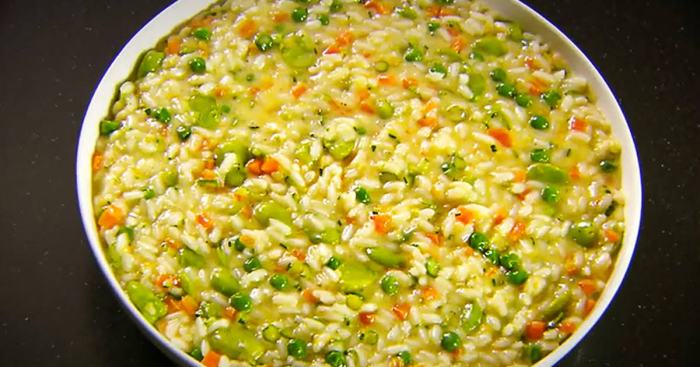Bread protein is a crucial component that determines the structure, texture, and nutritional value of bread. It plays a vital role in the baking process, influencing everything from dough development to the final characteristics of the loaf. This guide will delve into the composition, quality, and impact of bread protein, providing a comprehensive understanding of this essential ingredient.
From its role in gluten formation to its contribution to overall dietary protein intake, bread protein offers a fascinating exploration into the science behind our daily bread.
Bread Protein Overview

Bread protein is a crucial component that significantly influences the structure, texture, and overall quality of bread. It is composed of various proteins, including glutenin, gliadin, and albumins, each playing a specific role in shaping the characteristics of the bread.
In the realm of bread science, protein plays a pivotal role in determining the elasticity and texture of the final product. While we may not often consider the intricacies of bread protein when indulging in a slice of toast, it’s fascinating to explore how it relates to other culinary creations.
Take, for instance, the delectable air fryer zucchini fries . While seemingly unrelated, the protein content of the bread used in the coating influences the crispiness and golden-brown exterior of these irresistible treats.
The primary role of protein in bread is to form a gluten network during dough mixing. Glutenin and gliadin interact with water to create a viscoelastic matrix that traps carbon dioxide gas produced during fermentation. This network provides the dough with its elasticity and strength, allowing it to rise and maintain its shape during baking.
Types of Bread Proteins
Different types of bread proteins contribute to the unique characteristics of various bread varieties:
- Glutenin:A high-molecular-weight protein responsible for the dough’s elasticity and strength. It forms a continuous network that traps gas, allowing the dough to rise and maintain its shape.
- Gliadin:A low-molecular-weight protein that contributes to dough extensibility and elasticity. It interacts with glutenin to form the gluten network.
- Albumins:Water-soluble proteins that play a minor role in bread structure but contribute to crust color and flavor.
Bread Protein Quality
Bread protein quality refers to the ability of the protein present in flour to form a strong and elastic dough, which is essential for producing high-quality bread with good volume, texture, and shelf life.
The quality of bread protein is determined by several factors, including:
Gluten Content and Quality
- Gluten is a complex protein that forms a network when flour is mixed with water. This network provides the dough with its strength and elasticity.
- The amount and quality of gluten in flour is influenced by the wheat variety, growing conditions, and milling process.
Protein Composition, Bread protein
- Bread proteins are composed of two main types: gliadin and glutenin.
- Gliadin provides dough with elasticity, while glutenin provides strength.
- The ratio of gliadin to glutenin affects the quality of the dough and the resulting bread.
Methods for Measuring and Evaluating Bread Protein Quality
Several methods are used to measure and evaluate bread protein quality, including:
- Protein content:Measured using methods like the Kjeldahl method or near-infrared spectroscopy.
- Gluten content:Determined by washing and drying the gluten from a flour sample.
- Gluten quality:Assessed using tests like the gluten index or extensibility test.
Bread Protein and Baking
Protein plays a crucial role in bread baking, significantly impacting the quality and characteristics of the final product. The protein content of flour directly affects the formation of gluten, a network of proteins that gives bread its structure and elasticity.
Gluten Formation and Dough Development
When flour is mixed with water, the proteins begin to interact, forming gluten. This process is facilitated by the presence of water, which allows the proteins to unfold and form disulfide bonds with each other. The more protein present in the flour, the more gluten is formed, resulting in a stronger and more elastic dough.
Impact on Bread Characteristics
- Volume:Bread with a higher protein content tends to have a larger volume due to the stronger gluten network, which can trap more gas during fermentation.
- Crumb Structure:A higher protein content leads to a finer and more even crumb structure. The stronger gluten network creates a more cohesive dough, resulting in smaller and more uniform air pockets.
- Crust Color:Bread with a higher protein content tends to have a darker crust color because the Maillard reaction, which is responsible for browning, is more pronounced in doughs with a higher protein content.
Bread Protein and Nutrition

Bread protein is a valuable source of essential amino acids, the building blocks of protein. It contributes significantly to the overall protein intake in many diets.
Contribution to Dietary Protein Intake
The protein content of bread varies depending on the type of flour used, with whole-wheat bread containing higher amounts than white bread. On average, a slice of bread provides about 3-5 grams of protein.
For individuals who consume a diet rich in whole grains, bread can be a significant contributor to their daily protein intake. Whole-grain bread is a good source of both soluble and insoluble fiber, which can promote satiety and aid in weight management.
Bioavailability and Digestibility
The bioavailability of bread protein refers to the amount of protein that is absorbed and utilized by the body. Bread protein is highly digestible, with a digestibility coefficient of around 90%. This means that the majority of the protein consumed from bread is available for use by the body.
The digestibility of bread protein is influenced by several factors, including the type of flour used, the fermentation process, and the presence of other nutrients in the bread. Whole-wheat bread, due to its higher fiber content, may have a slightly lower digestibility than white bread.
Bread Protein and Health

Bread protein is a valuable nutrient that offers several potential health benefits. It is a rich source of amino acids, which are the building blocks of proteins. Proteins are essential for numerous bodily functions, including growth, repair, and maintenance of tissues.
Role in Weight Management
Bread protein can contribute to weight management by promoting satiety. Studies have shown that consuming bread with higher protein content leads to increased feelings of fullness and reduced hunger compared to bread with lower protein content. This is because protein takes longer to digest, which helps to slow down the absorption of glucose into the bloodstream.
Role in Blood Sugar Control
Bread protein can also play a role in blood sugar control. Protein has a lower glycemic index (GI) than carbohydrates, which means that it releases glucose more slowly into the bloodstream. This can help to prevent spikes in blood sugar levels, which can be beneficial for individuals with diabetes or prediabetes.
Evidence from Scientific Studies
Numerous scientific studies have demonstrated the health benefits of bread protein. For example, a study published in the journal “Appetite” found that individuals who consumed bread with a higher protein content experienced greater satiety and reduced hunger compared to those who consumed bread with a lower protein content.
Another study, published in the journal “Diabetes Care,” showed that consuming bread with a higher protein content helped to improve blood sugar control in individuals with type 2 diabetes.Overall, the evidence suggests that bread protein is a valuable nutrient that can contribute to overall health and well-being.
By consuming bread with a higher protein content, individuals can promote satiety, improve blood sugar control, and support weight management.
Last Recap

In conclusion, bread protein is a multifaceted component that significantly influences the quality, nutritional value, and enjoyment of bread. Understanding its composition, quality, and impact can empower bakers and consumers alike to make informed choices about their bread consumption.








